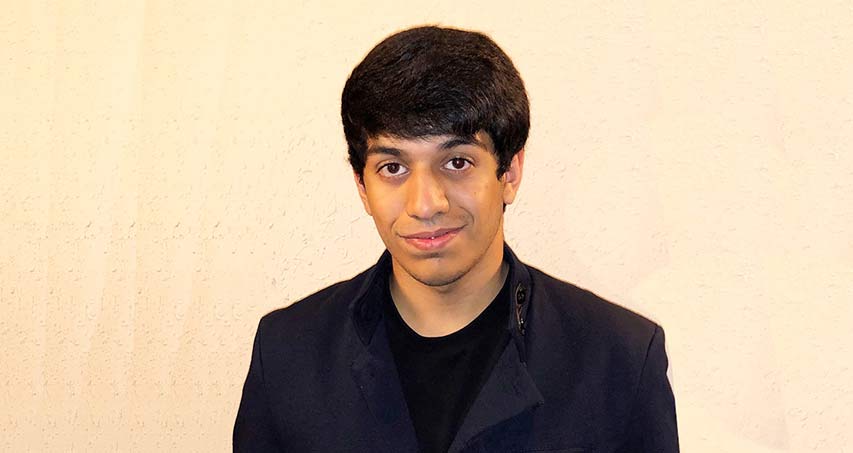(July 23, 2024) “Ensure availability and sustainable management of water and sanitation of all:” ‘Number 6’ on the United Nations’ list of Sustainable Development Goals deals with one of the world’s most pressing problems. In 2017, a whopping 2.2 billion people (around a quarter of the world’s population) lacked access to safely managed drinking water. Access to safely managed sanitation is even more dismal – over 4.2 billion people lack the most basic facilities. As the pandemic hit, it brought to the fore the fact that some 3 billion people lack basic hand-washing facilities at home.
It is a matter that will, if it is left uncontrolled, go on to determine the fate of the human race. And one that Shreya Ramachandran, winner of the Gloria Barron Prize for Young Heroes and the Google Science Fair Prize and now a student at Stanford University, has attempted to tackle with a simple, low-tech, and cost-effective solution: recycled grey water and the use of soap nuts. The relatively clean wastewater generated in houses or office buildings (usually from sinks, showers, baths, dishwashers, and washing machines, not anything that has come in contact with faecal waste) is referred to as grey water. Born and raised in California, Shreya founded The Grey Water Project to address the issue and propagate grey water as a viable solution. The organisation, which has been accredited by the United Nations Environmental Program, spreads awareness on grey water as a concept, the benefits of recycling it and propagating the use of soap nuts or soap berries as an alternative to chemical soaps and shampoos. Global Indian takes a look at her story.

Devastated by drought
In 2014, the pre-teen witnessed first-hand the water crisis in California, during a visit to Tulare County. Spanning an area of 12,530 km, Tulare County is mainly farmland and was home to the now-mostly dry Tulare Lake, once the largest freshwater lake west of the Great Lakes.
At the time, California was at the peak of a severe drought and stringent water-saving measures were put in place. “It wasn’t affecting me personally. I was also quite young. So I wasn’t aware of the extent to which things had progressed,” Shreya told the Smithsonian Magazine in 2021. When she arrived in Tulare for an archery competition, she understood the severity of the situation. Wells had run dry and people brought in water trucks even for basic needs like drinking and bathing.
A global problem
“I just didn’t consider that this is something that could happen in the United States – something that could happen so close to my home.” Every year, she would take a trip home, travelling through South India, where farming communities had abandoned their ancestral homes after the monsoons failed year after year.
Shreya began to understand then that water scarcity wasn’t limited to the third world. It was a global problem, one with life-or-death implications for every living creature on the planet. During her visits to India, she would turn on the water to find murky liquid ooze through the taps, or to have her shower run dry without warning. If she mentioned the problem, she was handed a bucket and told to stand in line for the water tanker at the break of dawn. This was a normal life. Back home in the Bay Area, even though there was clean drinking water coming through the taps, people were advised not to shower for longer than five minutes and to ensure their faucets were turned off as they brushed their teeth.


Grey water – and soap nuts
As she did everything, she could to minimize her use of water, she learned about grey water. Using grey water recycling systems, she found, can reduce household water usage by about 50 percent. It can be reused for a variety of non-potable uses, including landscape irrigation and flush toilets (the Indian Institute of Science uses only recycled water, through a system installed on campus for non-potable uses). These non-potable uses make up about 60 percent of a household’s requirements.
Again, answers found Shreya from India, this time when her grandmother came to visit. “She came bearing soapnuts – a berry shell that releases soap in water – to wash my hair,” she told Smithsonian Mag. “What started as a curious experiment turned into a five-year-long process of discovery and investigation to make sure that grey water reuse, especially from soapnuts, is safe, effective and will not negatively affect environmental health.”
Spreading awareness
It seems like the ideal solution, right? It could be, but then why are grey water recycling systems so rare? And why are so many people unfamiliar with the concept? Shreya knew as she did her research, that her first challenge would be tackling awareness. The systems are also expensive and besides, and the fact that storing contaminated water is difficult, unpleasant, and unhygienic puts off many people.
She wasn’t averse to dealing with challenges. Through her organisation, The Grey Water Project promotes the safe re-use of grey water and water conservation. After extensive research, she found that the main pollutants in grey water are soluble salts and borax. She was, however, surprised to find how many people had never even heard of grey water, despite it having been widely touted in the media over the last few years.
The organisation conducts workshops at schools, libraries, and community and corporate events to demystify the use of grey water. Its UN accreditation also been accredited allows Shreya and her team to contribute to UN Policy inputs. In 2018, her efforts landed her the Gloria Barron Prize for Young Heroes. She was a Top 20 Global Finalist at the Google Science Fair and is a National Geographic Young Explorer. She is also the winner of the SBI’s Twenty Under Twenty and the Children’s Climate Prize. The exceptional teen also received the President’s Volunteer Service Award Gold for two consecutive years, in 2020 and 2021.
- Follow The Grey Water Project on Instagram
</div




